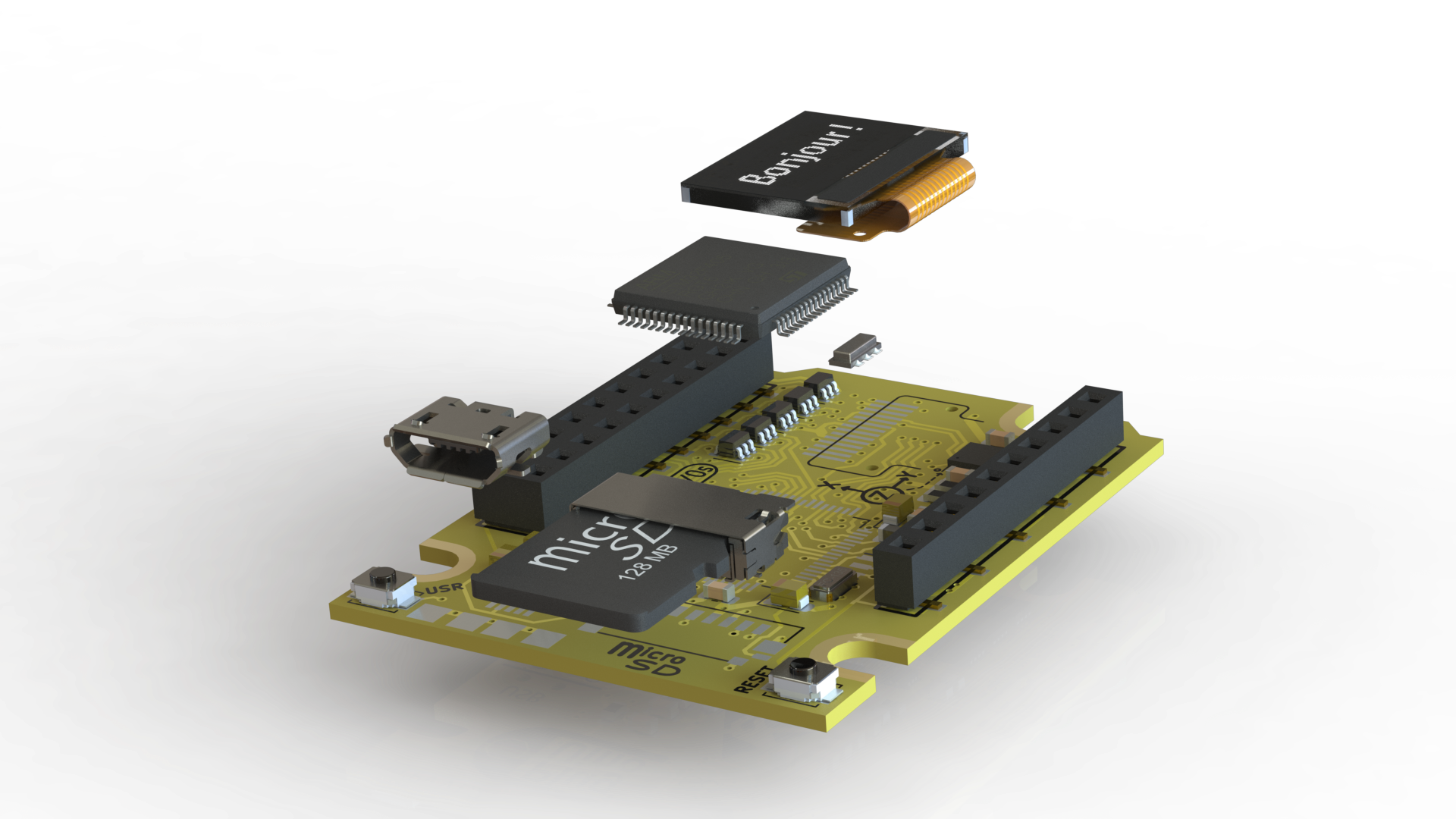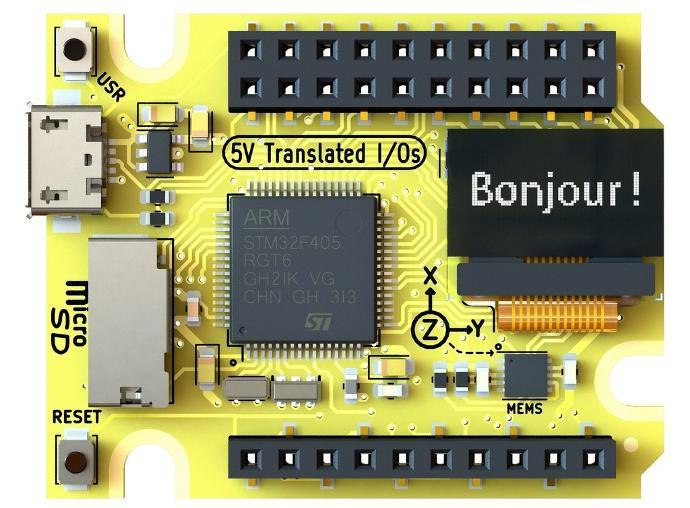ARDUINO OR MICROPYTHON ?
MicroPython and Arduino : 2 Development Platforms for Microcontrollers
When delving into the vast realm of electronics, one of the first crucial decisions is to choose the development platform that suits your needs. Two names that often come up in this quest are MicroPython and Arduino. These two environments offer distinct advantages, each with its own ecosystem, programming language, and community. In this article, we will explore the nuances between MicroPython and Arduino, breaking down their features, performance, and providing guidance to help you make the best decision based on your projects and skills. Whether you're an enthusiastic beginner or a seasoned expert, the comparison between MicroPython and Arduino can guide you towards the platform that best aligns with your electronic aspirations.
Presentation of MicroPython :
MicroPython, a minimalistic version of Python designed for microcontrollers, provides an innovative approach to electronic development. With its comprehensive programming language, MicroPython allows users to harness the power of Python in the embedded world. Distinct advantages of MicroPython include its simple syntax, ideal for beginners, as well as its compatibility with a variety of popular microcontrollers such as Plug'Py and PyBoard development boards.
Advantages of MicroPython :
- Full Python Language: Benefit from the simplicity and readability of the Python language, even on microcontrollers.
- Ideal for Beginners: Python's gentle learning curve makes it easy for those starting out in programming.
- Extended Compatibility: Working with a diverse range of microcontrollers opens up numerous possibilities for electronic projects."
With MicroPython, the emphasis is on flexibility and ease of use, providing an enticing alternative for those looking to explore electronics with the familiar Python programming language.
Presentation of Arduino :
Arduino, a pioneer in the field of open-source electronics, provides a hardware and software platform aimed at simplifying the creation of interactive projects. With a strong community and a variety of development boards, Arduino has become synonymous with accessibility and user-friendliness for electronics enthusiasts. The Arduino ecosystem includes a multitude of shields, sensors, and libraries, enabling users to quickly and easily create projects without having to write extensive code.
Advantages of Arduino :
- Active Community: Benefit from a dedicated community ready to share projects, provide advice, and solve problems.
- Variety of Shields and Sensors: The abundance of shields and sensors makes the creation of complex projects more accessible.
- Ease of Use: Arduino's user-friendly interface, combined with a simplified programming language, makes it a popular choice for beginners.
With Arduino, the emphasis is on simplicity and quick creation, allowing electronics enthusiasts to turn their ideas into reality without having to master advanced programming concepts.
Comparison of Programmation Languages :
One of the key factors in choosing between MicroPython and Arduino lies in the programming languages they use.
MicroPython : MicroPython uses the Python language, known for its clear and intuitive syntax. Its simplicity allows for a quick learning curve, even for programming beginners. The richness of the Python language provides increased flexibility to express ideas concisely, thereby simplifying the coding process.
Arduino: Arduino uses a simplified dialect of the C/C++ programming language, specifically tailored to its platform. Although this might seem a bit more complex for beginners, the Arduino language is structured to simplify the creation of electronic projects while providing enough power for more advanced applications.
The fundamental difference between the two will lie in your preference for Python with MicroPython or the C/C++ dialect with Arduino. Python, with its clear syntax and ease of learning, can be an obvious choice for beginners, while the Arduino language may appeal to those looking for a smoother transition to more advanced programming languages..
Ecosystem and Compatibility :
The ecosystem surrounding MicroPython and Arduino can significantly influence the choice of a platform for your electronic project.
MicroPython : MicroPython, despite being a newer platform, has experienced rapid growth in its community and ecosystem. Its compatibility with various microcontrollers broadens the range of possibilities, although some components specific to Arduino may require adaptation.
Arduino : Arduino benefits from a long-established community, providing a wide range of resources, open-source projects, and libraries. The availability of numerous shields and sensors specifically designed for Arduino makes the integration of these components into your projects easy, offering a plug-and-play experience.

Speaking of plug-and-play solutions, the MicroPython Plug'Py board deserves mention. Equipped with protected 5V inputs and outputs, it offers extended compatibility with a variety of sensors, allowing seamless integration into your electronic projects. This versatile board can be an ideal solution for those seeking a platform that combines the advantages of MicroPython and Arduino while providing a smooth user experience.
The choice between MicroPython and Arduino will also depend on the availability of components and resources required for your specific project. An active community can be a major asset for troubleshooting, sharing ideas, and inspiring new projects.
Ease of Use :
Ease of use is a crucial criterion, especially for those entering the world of electronics and programming for the first time.
MicroPython :MicroPython stands out for its ease of use. With a user-friendly Python language, accessibility is at the core of this platform. Programming can be done interactively, allowing beginners to experiment quickly and see results in real-time.
Arduino : The Arduino Integrated Development Environment (IDE) simplifies the coding process, even for those with limited programming experience. The graphical interface makes it easy to upload code to the board, making the process more seamless.
In summary, the choice between MicroPython and Arduino can be influenced by your personal preference for the user experience. MicroPython provides a more familiar approach with Python, while Arduino emphasizes an intuitive user experience in a specially designed environment.
Performance :
Performance can play a crucial role, especially for more complex or demanding electronic projects.
MicroPython : MicroPython, while powerful, can be limited in terms of performance compared to low-level languages like C/C++. This could be a significant factor for projects requiring ultra-fast execution or intensive calculations.
Arduino : Arduino, using a low-level programming language, provides optimized performance for embedded systems. For projects where execution speed is crucial, Arduino's C/C++ language can be an advantage.
The choice between MicroPython and Arduino depends on the nature of your project. If performance is a critical criterion, especially for real-time applications, Arduino could be the ideal solution. However, for less resource-intensive projects, MicroPython can offer an excellent balance between performance and simplicity.
Types of Project :
Each platform has its strengths in specific project contexts.
MicroPython :
- Educational Projects: The simplicity of MicroPython's Python language makes it ideal for educational projects, offering a gentle learning curve.
- Interactive Projects: Projects requiring real-time interaction, such as sensors and actuators, can benefit from the simplicity of MicroPython.
Arduino :
- Robotic Projects: Arduino is widely used in robotics projects due to its ease of use and the variety of available sensors and actuators.
- Critical Embedded Projects: For applications where speed and efficiency are crucial, such as critical embedded systems, Arduino may be preferable.
Consider the specific nature of your project and its particular requirements to determine the platform that best suits your needs. Both offer considerable flexibility, but certain situations may favor the use of one over the other.
Conclusion :
In conclusion, the choice between MicroPython and Arduino essentially depends on your personal preferences, the nature of your project, and your programming skills.
- MicroPython :
- Ideal for beginners with its accessible Python syntax.
- Perfect for educational and interactive projects.
- Well-suited if you have prior experience with Python.
- Arduino :
- Excellent user-friendliness, particularly suitable for beginners.
- Efficient for critical embedded projects and real-time applications.
- Active community and a variety of available shields.
Discover MicroPython with Plug'Py :
For those choosing MicroPython as their programming language and exploring its benefits, integrating the Plug'Uino Py board can be a wise decision to further enhance the electronic development experience.
Plug'Py

- Protected 5V Inputs/Outputs : The Plug'Uino Py board offers protected 5V inputs and outputs, expanding the range of compatible sensors and actuators. This allows for the use of a variety of electronic components without worrying about voltage, providing appreciable flexibility in project design.
- Online Integrated Development Environment (IDE) : The Plug'Uino Py board seamlessly integrates with an online Integrated Development Environment (IDE) compatible with Chrome, Edge, and Opera browsers. This user-friendly tool makes learning MicroPython accessible, whether through block programming or using the classic editor.